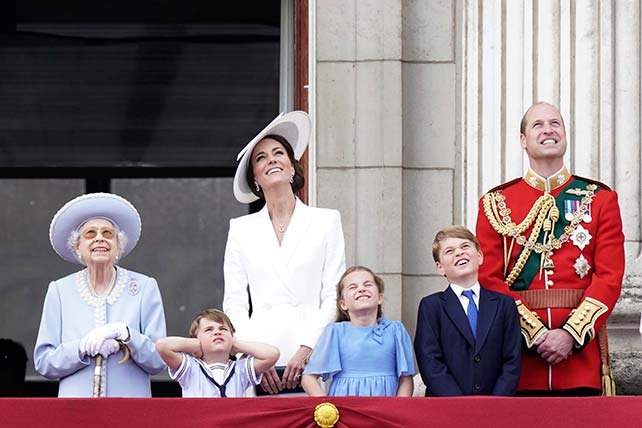LONDON (RNS) — If you want to understand a nation, listen to its national anthem. “The Star-Spangled Banner” urges Americans to look out for the flag that waves over “the land of the free and the home of the brave.” “La Marseillaise,” the anthem of republican France, calls its citizens to arms. But the UK’s national anthem is a prayer, urging God to “save” — grant long life to — the queen.
It’s a clear sign that in Britain, the head of state, the country and faith are inextricably linked. This week “God Save the Queen” has been ringing out across Britain as the country has marked the 70th anniversary of the accession of Elizabeth II, the longest-serving English monarch.
When Elizabeth came to the throne in 1952, Britain was still being rebuilt after the end of World War II and its heavy bombing campaigns; Winston Churchill was prime minister and the country still had an empire. The young queen’s coronation suggested a new era — as the millions of television sets purchased to watch the live broadcast of the ceremony from London’s Westminster Abbey signaled.
But the coronation itself was steeped in tradition and confirmed the continuing intertwining of the monarchy and religion. The ceremony can be traced back more than 1,000 years and involves the anointing of the monarch who commits his or herself to a life of service to God and the people through sacred promises. One of those, to uphold the Protestant religion, is also a reminder of the religious divisions of the past.
The queen’s two titles of Defender of the Faith and Supreme Governor of the Church of England, given to her at her accession, also owe their existence to Reformation history. Defender of the Faith was first bestowed on Henry VIII by a grateful pope for the English king’s rebuttal of the teachings of Martin Luther, a title that Henry defiantly held onto even after breaking with Rome to found the Church of England. He made himself head, while his daughter, the first Elizabeth, called herself Supreme Governor of the Church of England, saying Jesus Christ was its head.
RELATED: Billy Graham and Queen Elizabeth: The Truth About Their Surprising Friendship
Today, the role of Supreme Governor indicates the British monarch retains a constitutional role regarding the established Church of England but does not govern or manage it. The modern Elizabeth has left that to the bishops, although she addresses general synods and has a role as a listener and guide to her primate, the Archbishop of Canterbury.
But while Defender of the Faith has been over the years an inherited title and little more, Elizabeth II appears to have embraced it and made it her own, speaking out very openly in recent years about her own Christian faith and explaining how it has provided the framework of her life.
She has done this mostly through the medium of her annual Christmas message, a tradition begun by her grandfather, George V, in 1932, and continued by her father, George VI. Her early Christmas Day broadcasts were platitudinous — the holidays as an occasion for family was a frequent theme. In 2000, however, she spoke of the Millennium as the 2,000-year anniversary of the birth of Jesus Christ, “who was destined to change the course of our history.”

